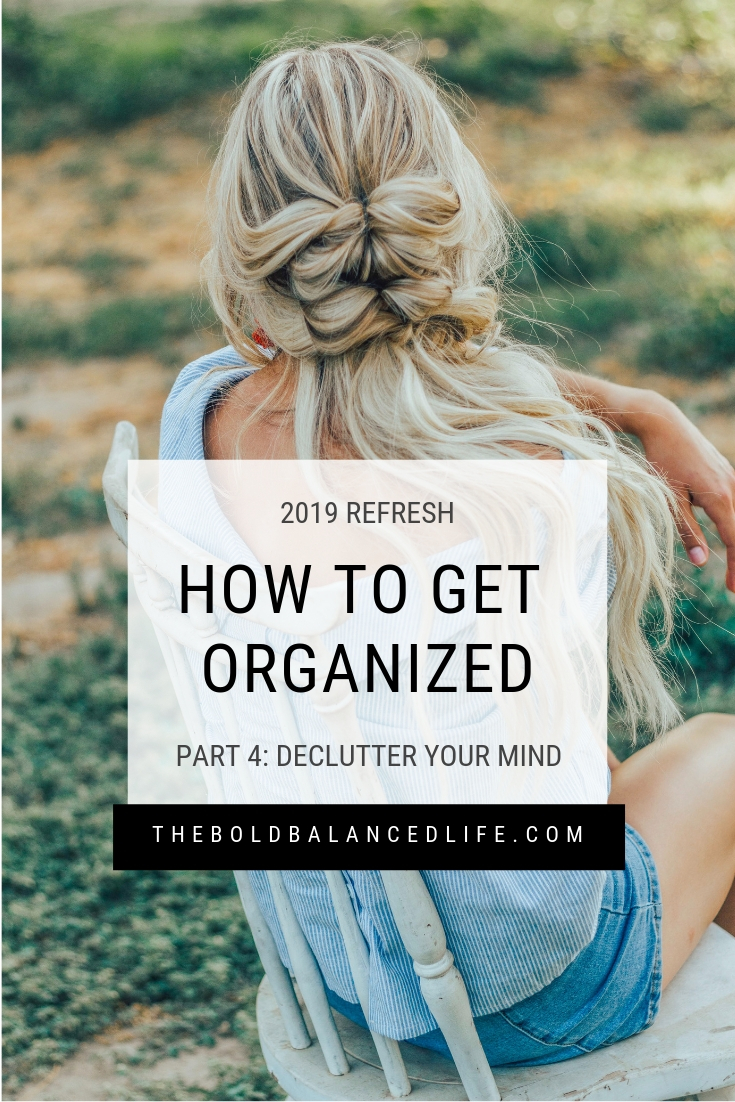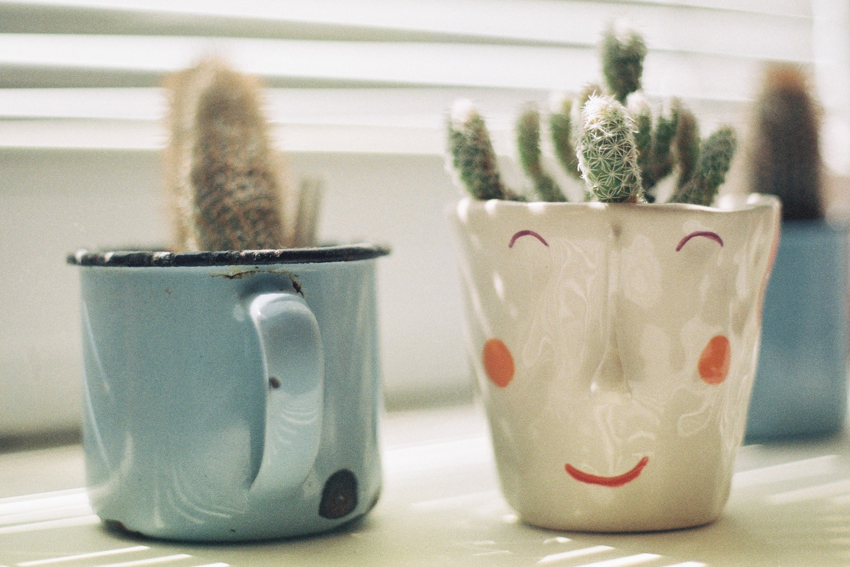Does your endless to-do list keep you up at night?
Heck, Alex, there are never enough hours in the day!
I get it. Life is crazy fast-paced lately. It’s hard to stay focused, and even harder to maintain some resemblance of serenity.
If you’ve been feeling like you’re all over the place, it’s time to declutter your mind.
Here are the top 4 ways that helped me get organized, and I hope they’ll do the same for you.
1. Create a Master List
Inspired by David Ellen’s book Getting Things Done, I recently sat down and created a master list, jotting down every unfinished project or to-do I could think of. It was one of the most freeing and relaxing exercises I’ve ever done. And this is how I did it:

First, do a brainstorm and write down everything that comes to mind. Then, as you go about your day, capture everything that pops up in your head. Next, go through each room in your home and see if it sparks any other to-dos. It doesn’t matter how big or small, write it all down.
Here are a few items from my list for reference:
-
Brainstorm blog post ideas
-
Fix the garage roof
-
Get life coach certificate*
-
Try a martial arts class
-
Book flights to Hawaii
-
Buy laundry detergent
-
etc.
You can do this on a blank piece of paper, a spreadsheet or the free printable template I created for you (click here to download).
As I wrote things down, I also added the categories I associate with each project or task. Things like Repairs, Family, Health, Finance, Work, Gifts, Appointments, Arts & Crafts, Some Day, Bucket List, and so on. It helps spot things quickly and makes it easier to organize the items into separate project lists later on.
David Allen also advises his clients to decide right away if the item is actionable. If it is and it takes less than two minutes he recommends doing it immediately.
For tasks that take more than two minutes, ask yourself, what’s the next action you need to take? If it’s a big project, create a separate file or list for it. If it’s smaller, decide whether you can delegate it (e.g. if you need to wait for input from someone else) or defer it (e.g. put it in your calendar to remind you on a specific date).
Items that aren’t actionable can either be filed for reference, incubated (e.g. put on a “someday”/”maybe” list) or eliminated (e.g. toss papers you no longer need).
In Part 1 of this How to Get Organized Series, I also shared a free printable goal + task planner template.
2. Plan your day.
There are several ways to do this, and what works for you depends on your organizing style (specifically whether you are a visual or detail-oriented person).
In my case, for example, I really wanted to have Lavendaire’s Daily Planner. But here’s the thing, if I have to open the planner to get to the page for the day, I’m very likely not going to do it. Which is why I’m currently using the Daily Planner Pad by Hadley Designs. That way I can always see what I have going on and tear off the page at the end of the day.
I also created a free printable day planner (download here). You can use it to keep track of your daily must-dos, appointments, meal plan, hydration, fitness, gratitude, and accomplishments.
If you want something more minimalist, you can simply write your 1-3 must-dos for the day on a post-it. Stick the note to your laptop or the screen of your phone (it’ll make it harder to get distracted by notifications lighting up your screen).
Alternatively, if paper is too old-school for you or you’re making an effort to reduce waste, you can plan your day with mobile apps like Google Calendar/Keeps or the notes and calendar app that comes with your phone. The benefit is that you can also set reminders.
Daily planning can be as detailed as you can handle or as simple as a notepad. But if you want to stay on top of things (especially so you can keep important appointments) some form of planning is essential.
I also recommend keeping lists for things to pack for a trip, a household management binder for emergencies, and an “all out of” list for shopping. It’ll save you time and frustration.
3. Journal.
I can’t stress enough how important it is for our wellbeing (and sanity) to write things down.
While creating a master list and planning your day are the most practical ways to declutter your mind, many of us also spend a great portion of our time ruminating (i.e. repetitively thinking about a situation or a problem).
Last year, I did The Artist Way as part of my recovery from burnout. It included an invaluable exercise called Morning Pages. The author, Julia Cameron, recommends “three pages of longhand, stream of consciousness writing to provoke, clarify, comfort, and prioritize the day at hand.”
Even though I didn’t manage three pages every morning, regularly writing down what’s on my mind helped tremendously in figuring out solutions, learning things about myself, and coming up with new ideas.
Alternatively—or additionally—talking about the things that block or bother you can help you organize your thoughts and move past them.
4. Practice mindfulness.
mind·ful·ness: a mental state achieved by focusing one’s awareness on the present moment, while calmly acknowledging and accepting one’s feelings, thoughts, and bodily sensations.
In my post 7 Days of Slow Living, I mentioned many of the simple things you can do to live more intentionally each day. Here’s a quick recap:
- Engage the senses: take a moment and notice what you can see, feel, hear, smell, and taste.
- Take a deep breath: I recommend an exercise called The Three-Minute Breathing Space Practice.
- Eat mindfully: prepare a wholesome meal without distractions (no phone or Netflix!) and then savor each bite as you eat it.
- Organize your space: declutter, tidy and clean your home and workspace—without distractions.
- Spread the love: write down the things you’re grateful for and spend some quality time with your loved ones.
- Listen: create a playlist of songs you love and enjoy an uplifting podcast or audiobook.
- Practice self-care: go for a walk in nature, try a new hobby, or read a book. Need more inspiration? Here you go.
I hope these tips and resources will help you get some peace of mind and boost your productivity. If you have some ideas I forgot to mention here, let me know in the comments below.
How to Get Organized Series:
Pt1: First Steps (includes free printable Goal + Task Planner)
Pt2: Home Organization
Pt3: Staying Organized for Good
* I’m a Certified Organizational Specialist and offer both Learn to Organize Like a Pro Workshops and 1:1 Coaching. But because I believe in a holistic approach to getting organized, I’m currently getting certified as a Life Coach so I’ll be able to better help my clients figure out the underlying causes that keep them from staying organized for good.
Image: Fernando Lavin







